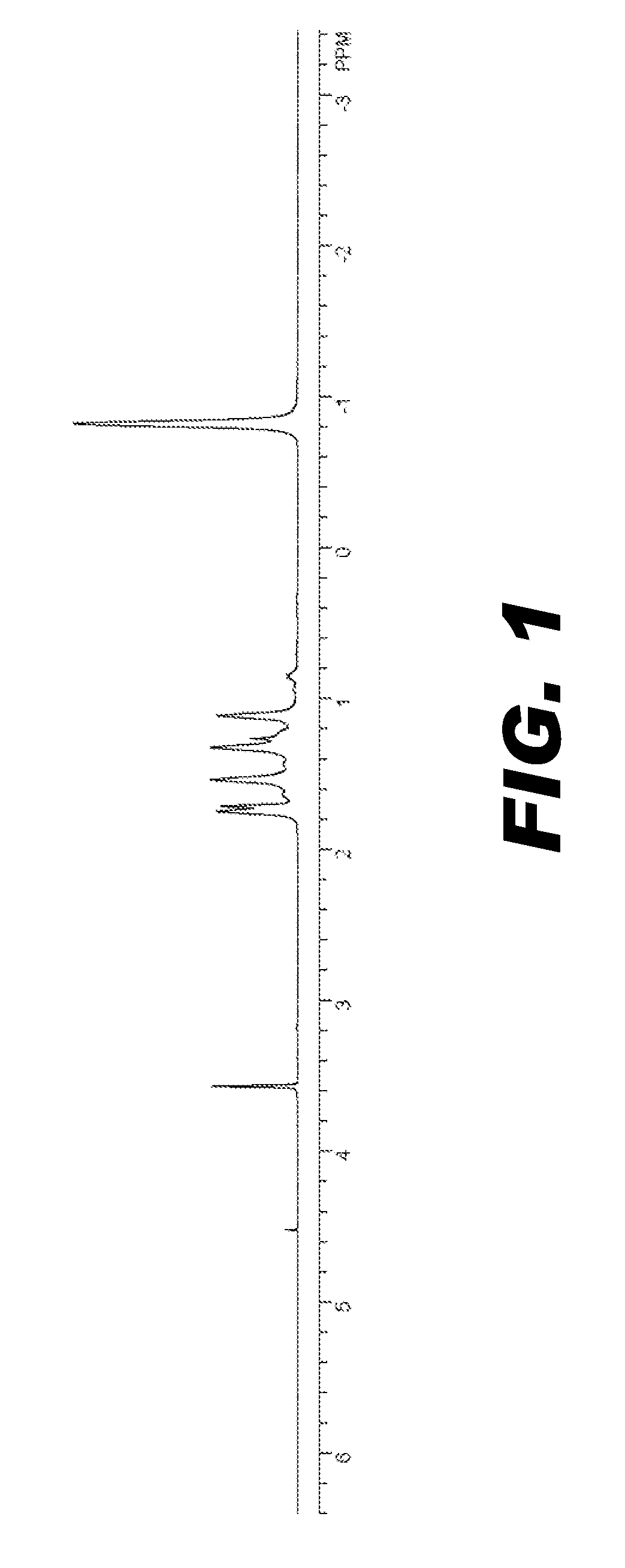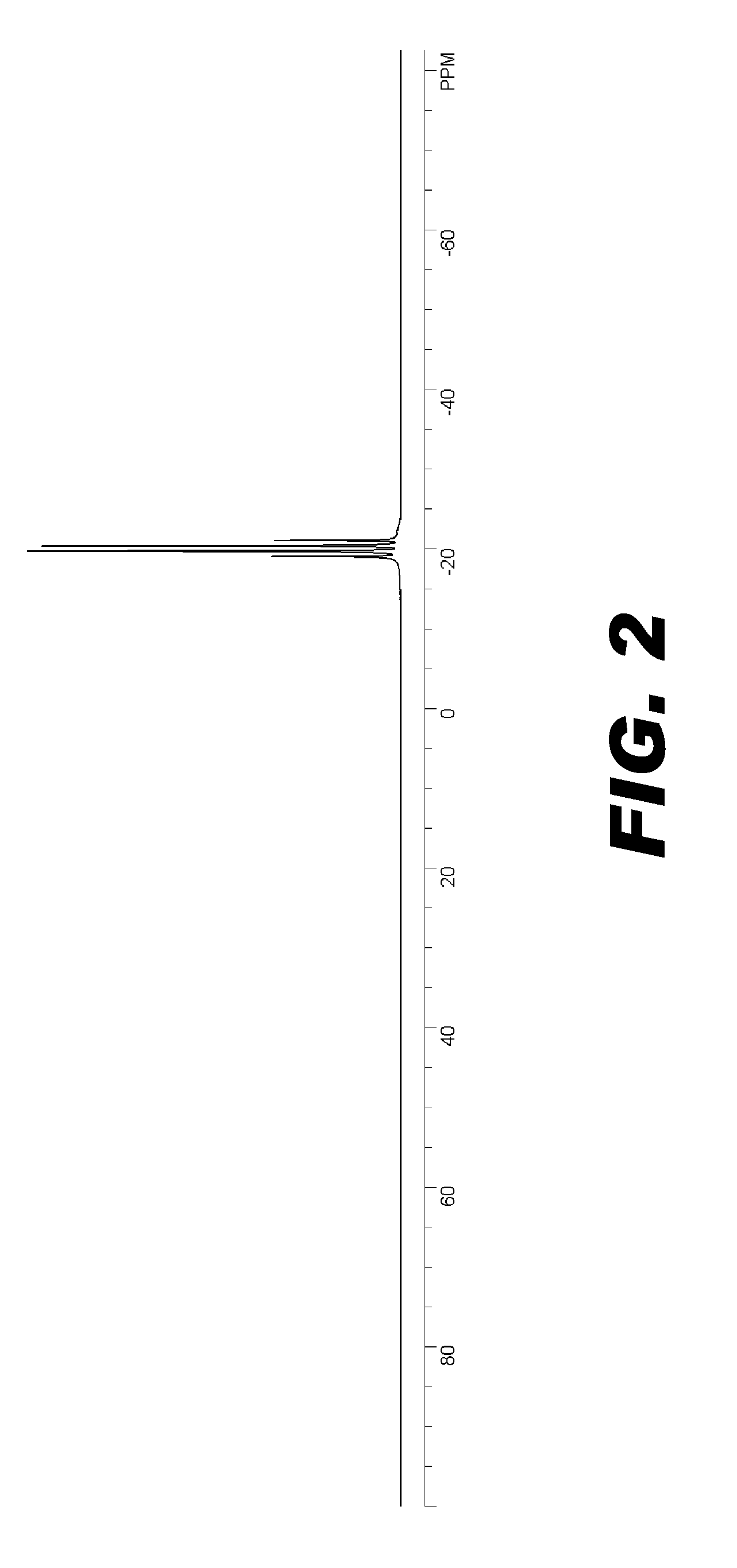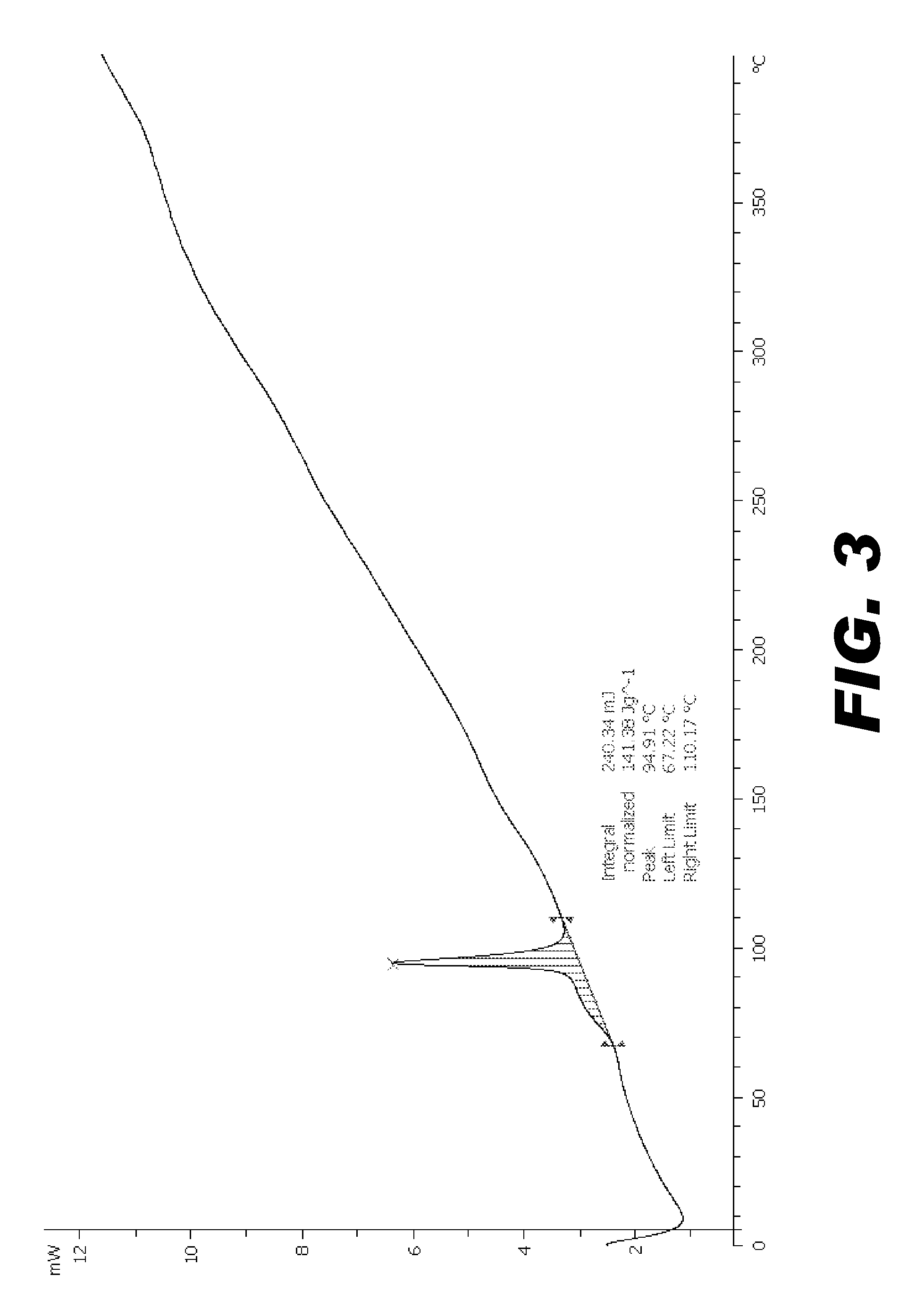Metal amidoborane compositions and processes for their preparation
a technology of metal amidoborane and composition, which is applied in the direction of monoborane/diborane hydrides, hydrogen production, chemical apparatus and processes, etc., can solve the problems of thf and other ethereal solvents being exceedingly difficult to remove from the metal amidoborane, and failing to produce solid metal amidoborane of adequate purity at commercially relevant scales, and affecting the chemical reactivity of metal amidoboran
- Summary
- Abstract
- Description
- Claims
- Application Information
AI Technical Summary
Benefits of technology
Problems solved by technology
Method used
Image
Examples
example 1
Preparation of LiNH2BH3 from Ammonia Borane and Lithium Amide (LiNH2) in Ammonia
[0110]LiNH2BH3 was prepared as depicted in the following scheme:
[0111]In a nitrogen-filled glovebag, lithium amide (39.0 g, 1.69 mol) and ammonia borane (52.1 g, 1.69 mol) were weighed and charged into a three liter, four-necked flask. The reaction flask was removed from the glovebag and quickly equipped with an air stirrer, a regular condenser, a dry ice condenser, and a low-temperature thermometer. An ammonia cylinder was connected to the reaction flask through the regular condenser. Ammonia (170 g, 9.98 mol) was condensed into the reaction flask at −70° C. An exothermic reaction occurred, wherein the pot temperature increased by about 10° C. The resultant off-white reaction mixture was stirred at −70° C. for about 6-8 hours.
[0112]Most of the ammonia was then evaporated by slowly warming the reaction mixture to room temperature. The resultant off-white slurry was then dried under vacuum for several hou...
example 2
Attempted Preparation of LiNH2BH3 from Methyllithium and Ammonia Borane in Ether
[0114]For comparison purposes, LiNH2BH3 was prepared by contacting ammonia borane with methyllithium in ether solvent, according to the following scheme:
Ammonia borane (10 g, 0.32 mol) was taken in ether (400 mL), and methyllithium in ether (200 mL, 1.6 M, 0.32 mol) was added drop-wise at 0° C. Below 0° C., ammonia borane solubility in ether was low and solids precipitated out of solution. When the methyllithium contacted the solution, gas evolution (bubbles) was noted, with some of the gas being exhausted from the bubbler, indicative of a reaction. A solid precipitate was noted after the addition of the methyllithium. The addition was complete in 2 hours and the contents were stirred further. The gas evolution was considerably reduced after 3 hours. And after 4 hours no gas evolution was noted. After 5 hours, when stirring was stopped, a white precipitate settled down leaving a clear top supernatant lay...
example 3
Reductions of Carbonyl Compounds with Lithium Amidoborane
[0116]Lithium amidoborane was prepared essentially as detailed in Example 1. The following procedure is representative of the lithium amidoborane reduction of carbonyl-containing compounds indicated in Table 1, below. To a 10-mL test tube equipped with a magnetic stirring bar was added lithium amidoborane (100 mg, 2.6 mmol), and the test tube was sealed with a rubber septum. Anhydrous THF (10 mL) was then added by syringe, followed by addition of the starting material, such as methyl cinnamate (420 mg, 2.6 mmol), at 0° C. The reaction mixture was warmed to room temperature and stirred for an additional 30 minutes at room temperature. The reaction mixture was quenched with water and the aqueous solution was extracted with dichloromethane (2×10 mL). The combined organic extracts were dried over anhydrous magnesium sulfate for 10 minutes. The yield of the reduced product, such as cinnamyl alcohol, was determined to be essentially...
PUM
 Login to View More
Login to View More Abstract
Description
Claims
Application Information
 Login to View More
Login to View More - R&D
- Intellectual Property
- Life Sciences
- Materials
- Tech Scout
- Unparalleled Data Quality
- Higher Quality Content
- 60% Fewer Hallucinations
Browse by: Latest US Patents, China's latest patents, Technical Efficacy Thesaurus, Application Domain, Technology Topic, Popular Technical Reports.
© 2025 PatSnap. All rights reserved.Legal|Privacy policy|Modern Slavery Act Transparency Statement|Sitemap|About US| Contact US: help@patsnap.com



